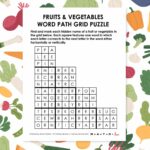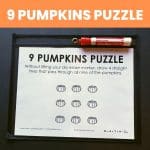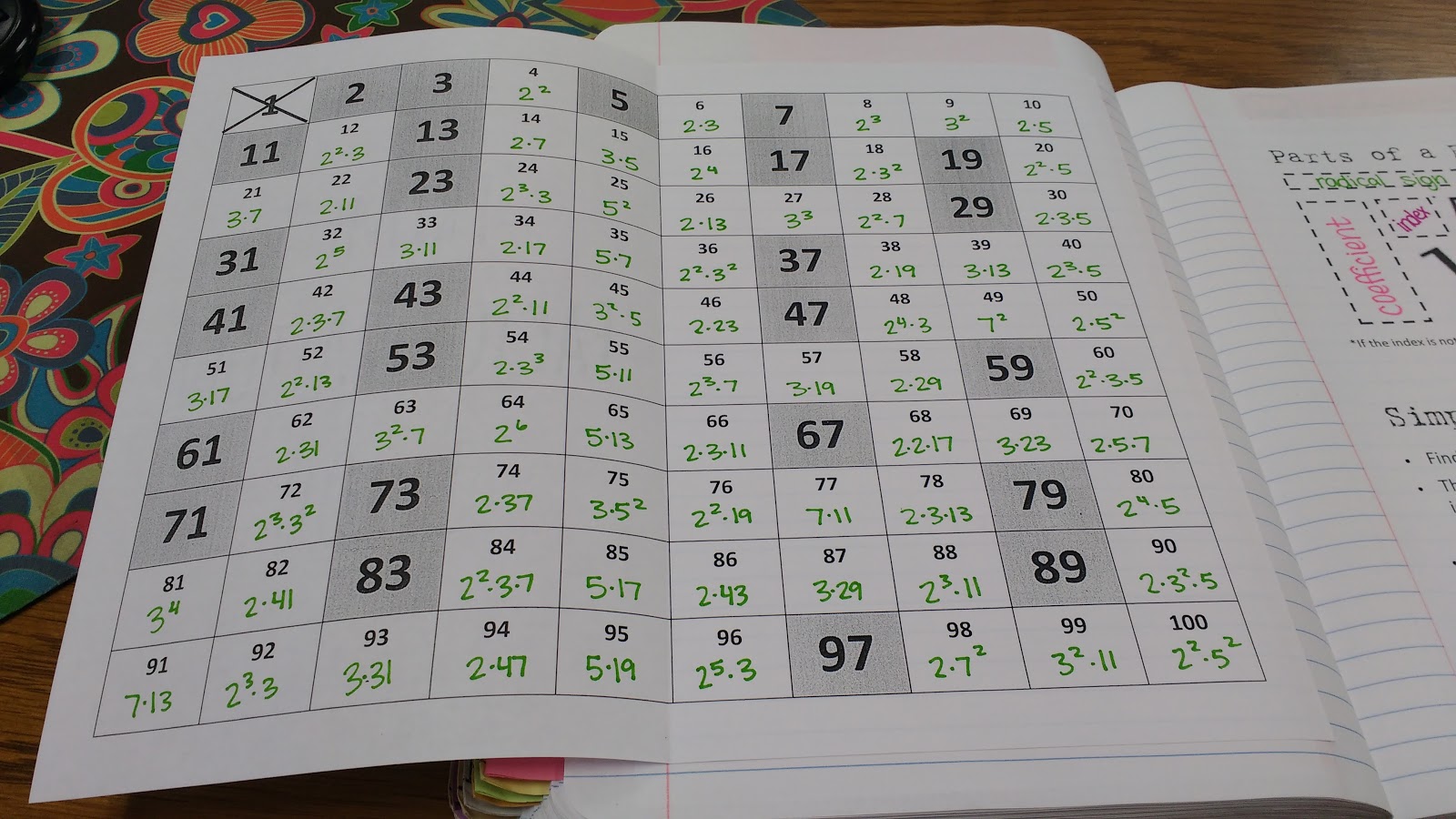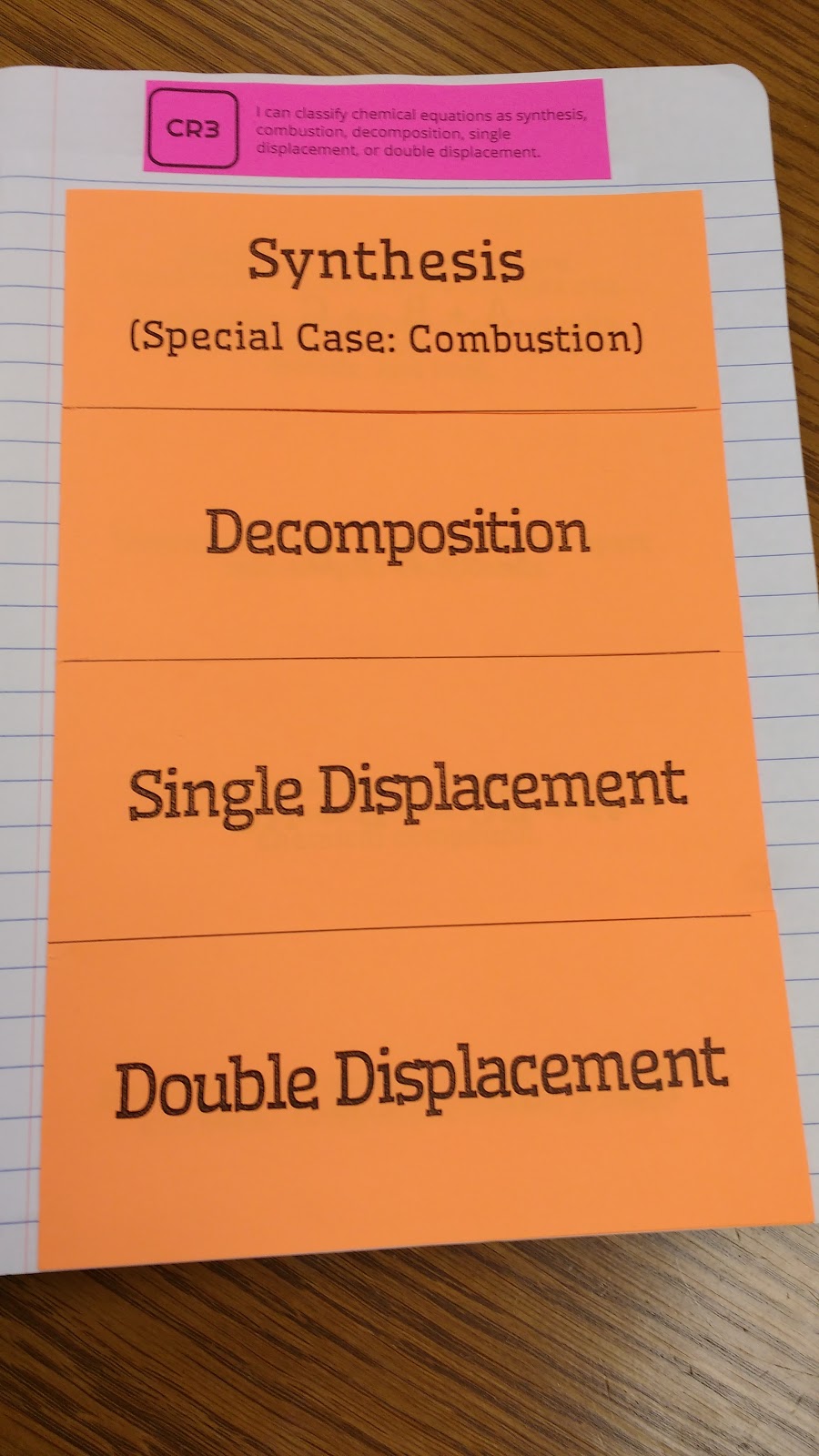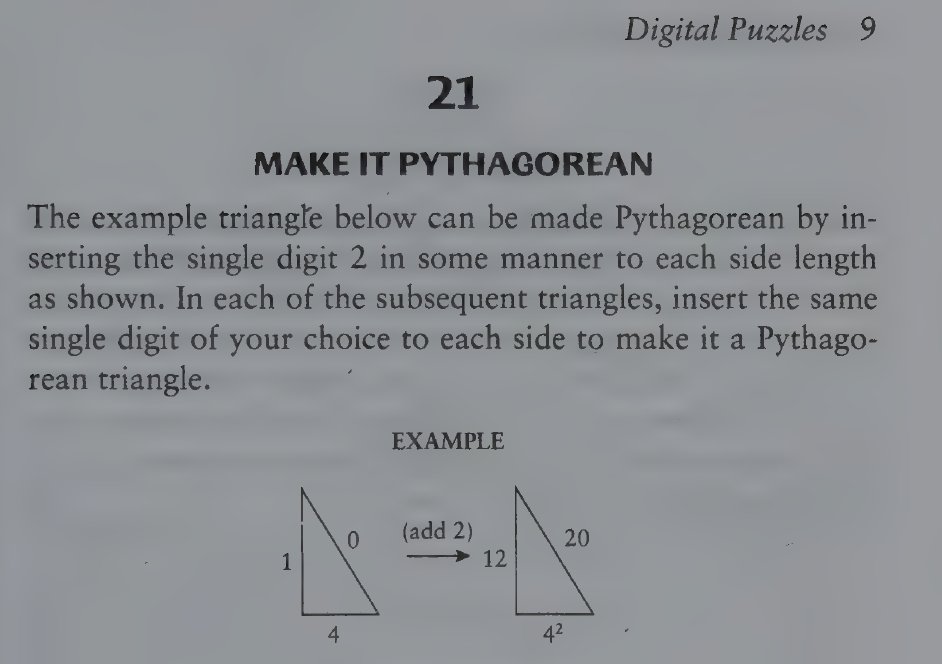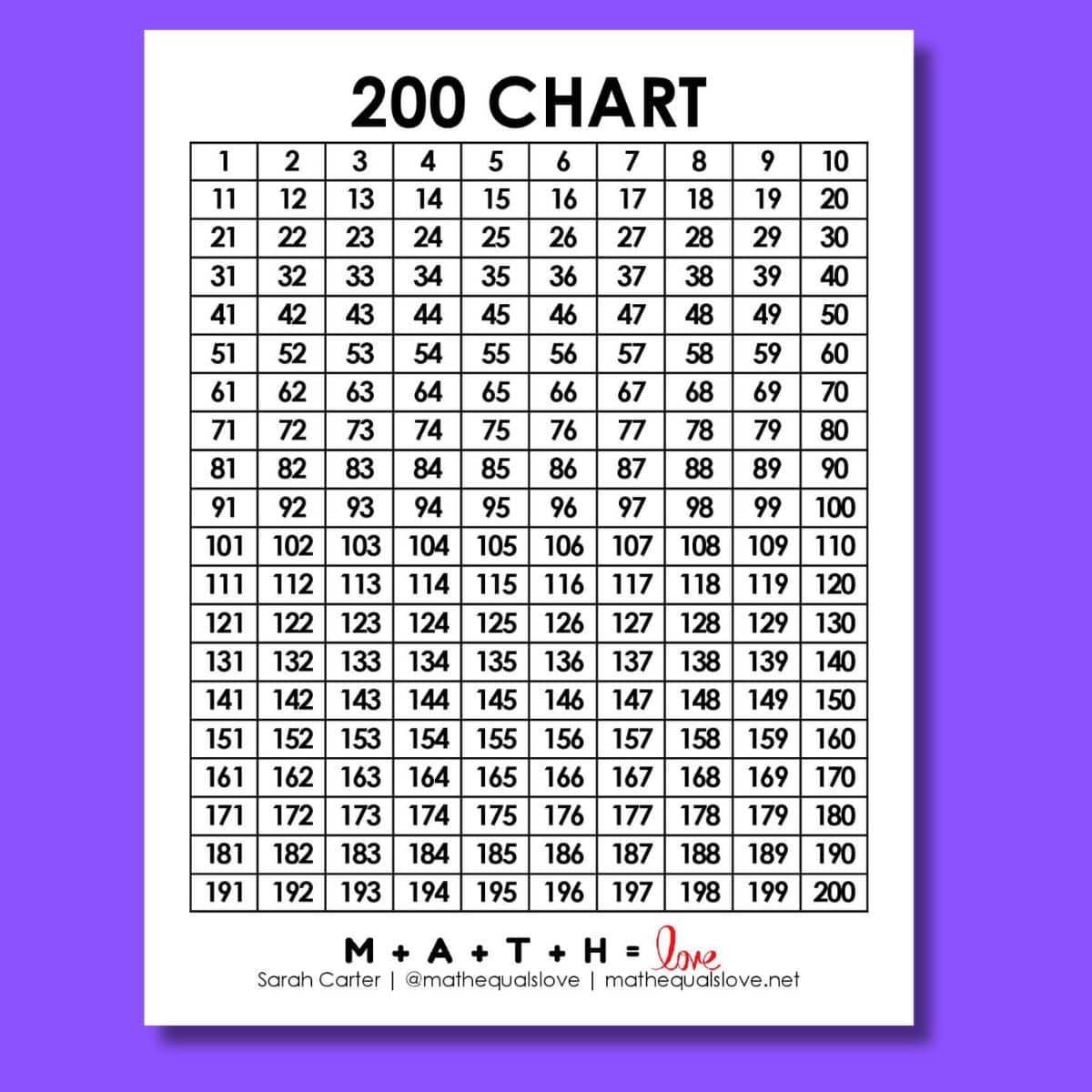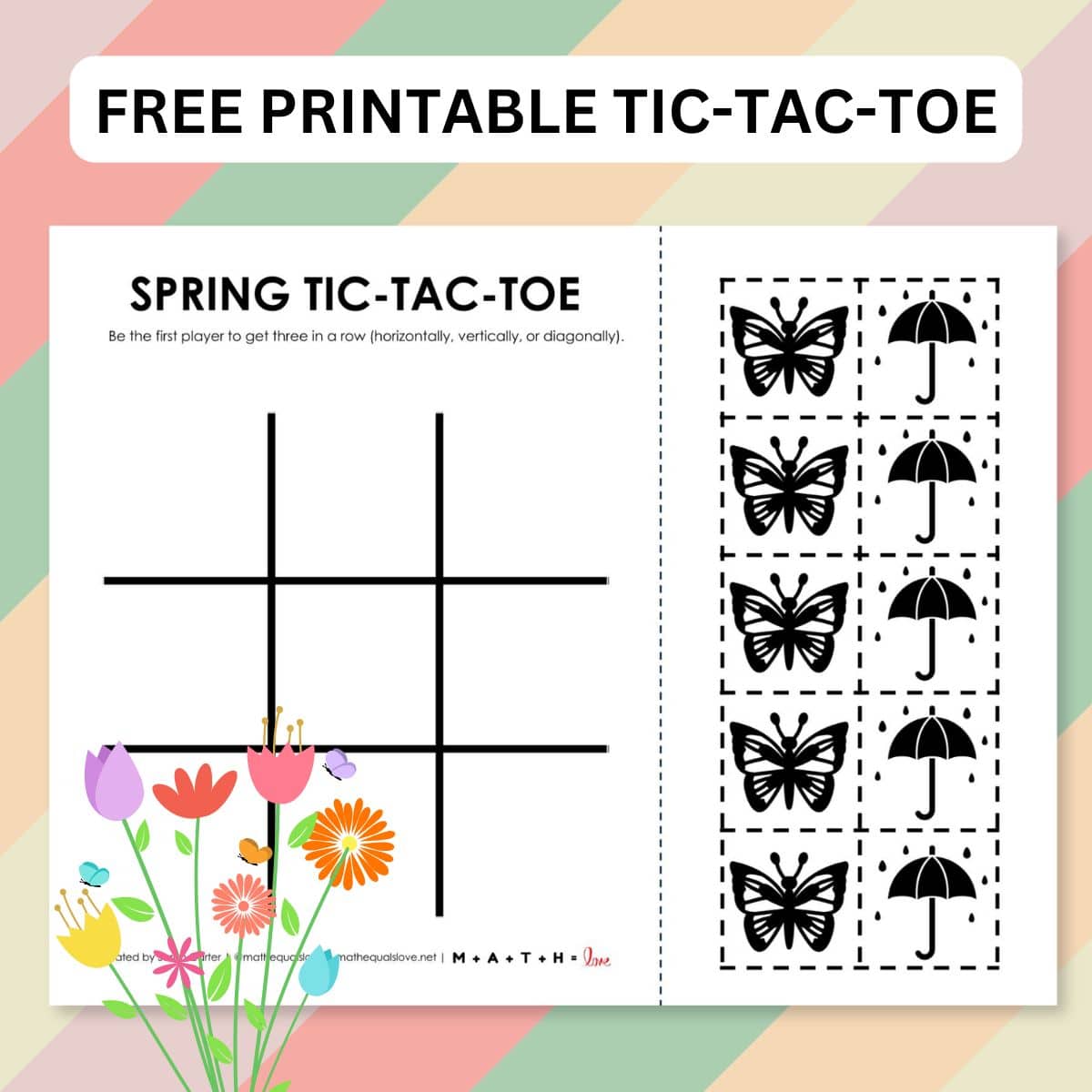Picking Pumpkins Game
This blog post contains Amazon affiliate links. As an Amazon Associate, I earn a small commission from qualifying purchases.
Looking for a quick game for the fall or Halloween season? Picking Pumpkins is a game for two players. The game is easy to understand, quick to play, and full of mathematics to analyze.
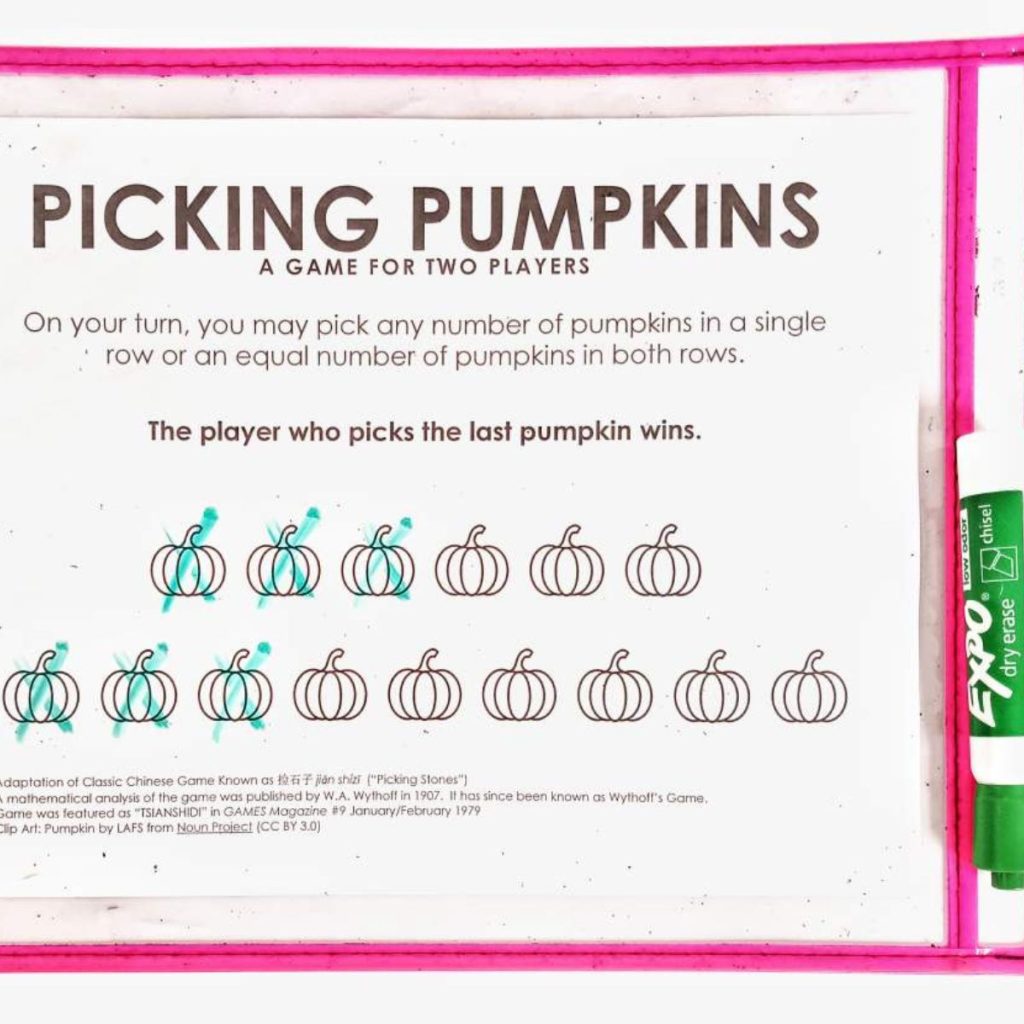
Looking for more food-themed activities and puzzles for your classroom? Here’s a few examples of the other food-related activities I have created.
Picking Pumpkins Instructions
Picking Pumpkins is a game for two players. On your turn, you may pick any number of pumpkins in a single row or an equal number of pumpkins in both rows.
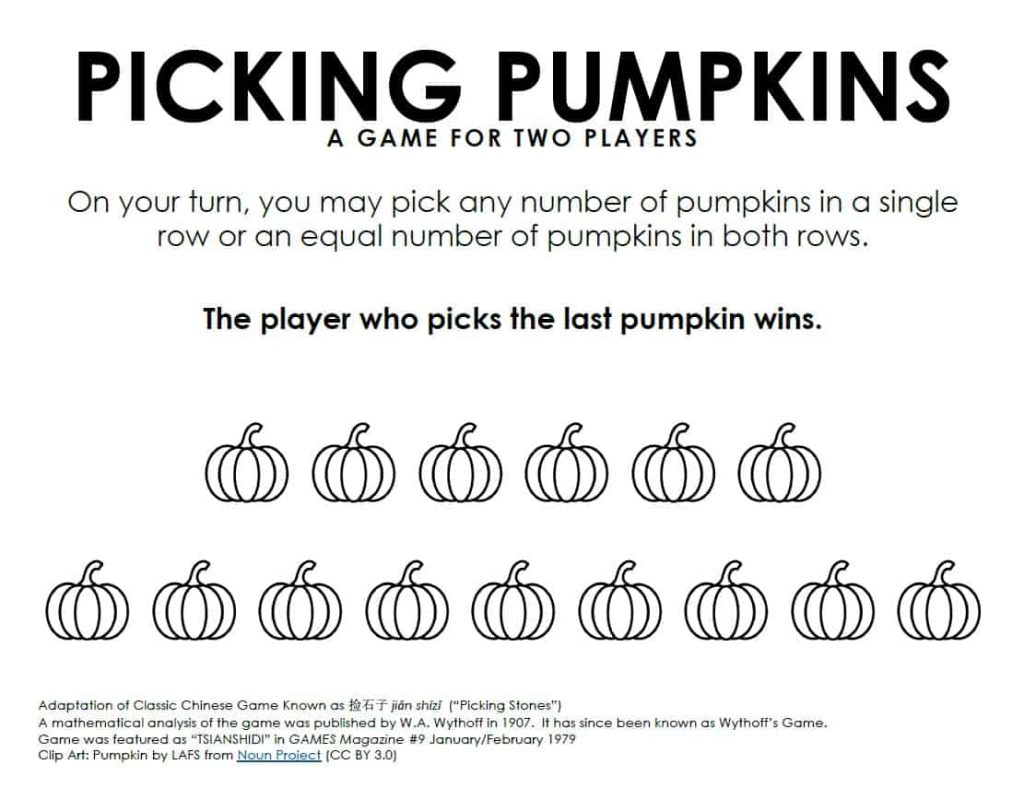
The player who picks the last pumpkin WINS.
Two Options to Play
Bingo Chips or Other Small Counters
My first suggestion for playing this Picking Pumpkins Game is to place bingo chips or other small counters on top of each pumpkin. When you pick the pumpkins on your turn, you can simply remove the counters from the gameboard.
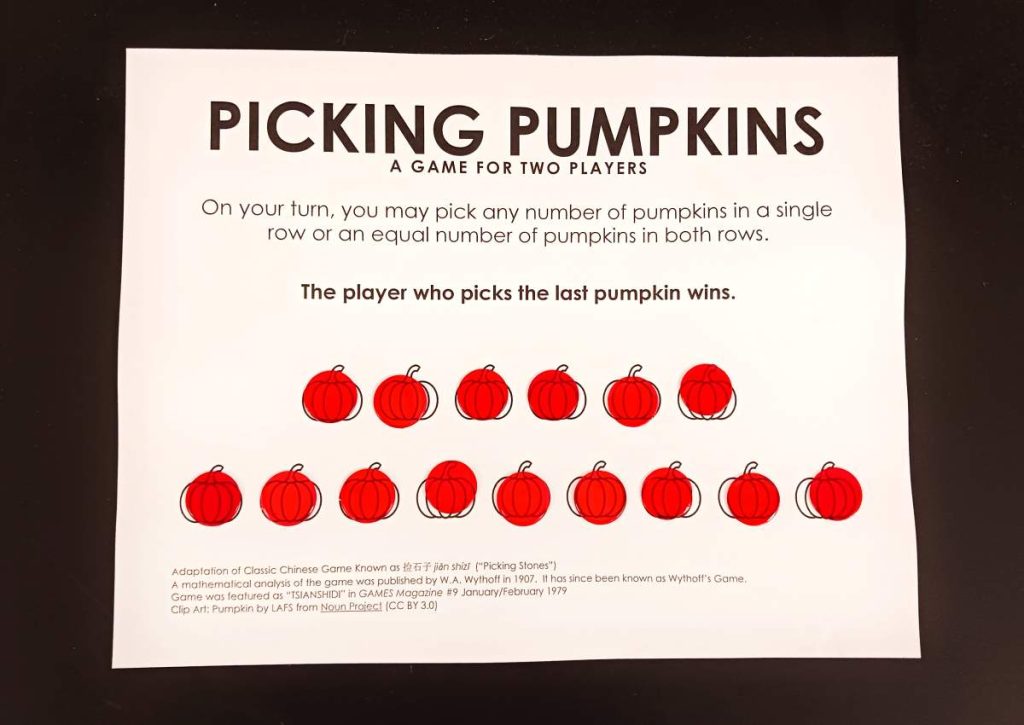
Here’s an example of player 1 picking 5 pumpkins from the first row.
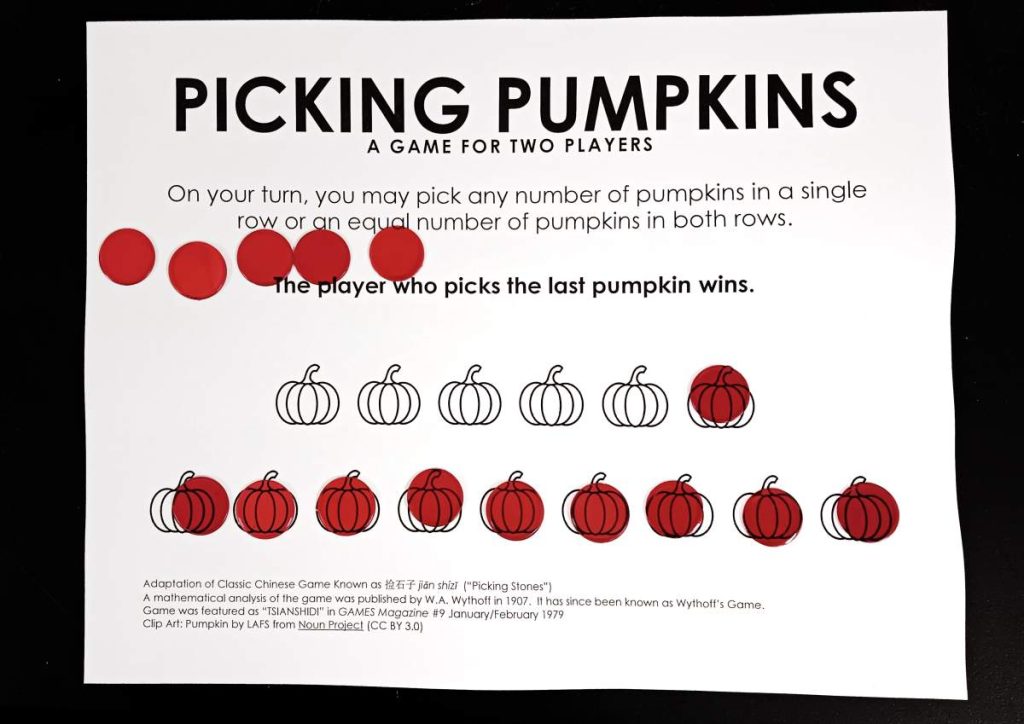
Remember – you can remove as many pumpkins as you want from a single row or an equal number from both rows. So, Player 1 could choose to remove 2 pumpkins from each row as their first move.
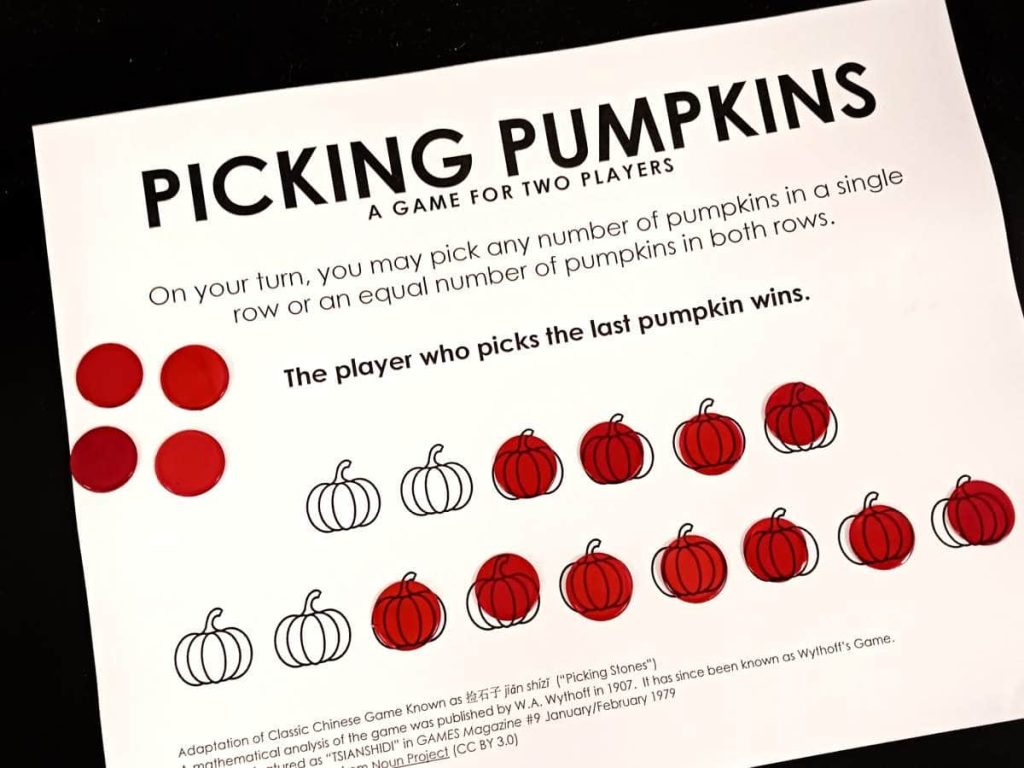
Marking Off Pumpkins
Alternatively, you can just mark off the pumpkins as you “pick” them.
To make this easier for my students and to save copies, I printed the picking pumpkins gameboard and placed it inside a dry erase pocket so students could easily mark off the pumpkins with a dry erase marker.
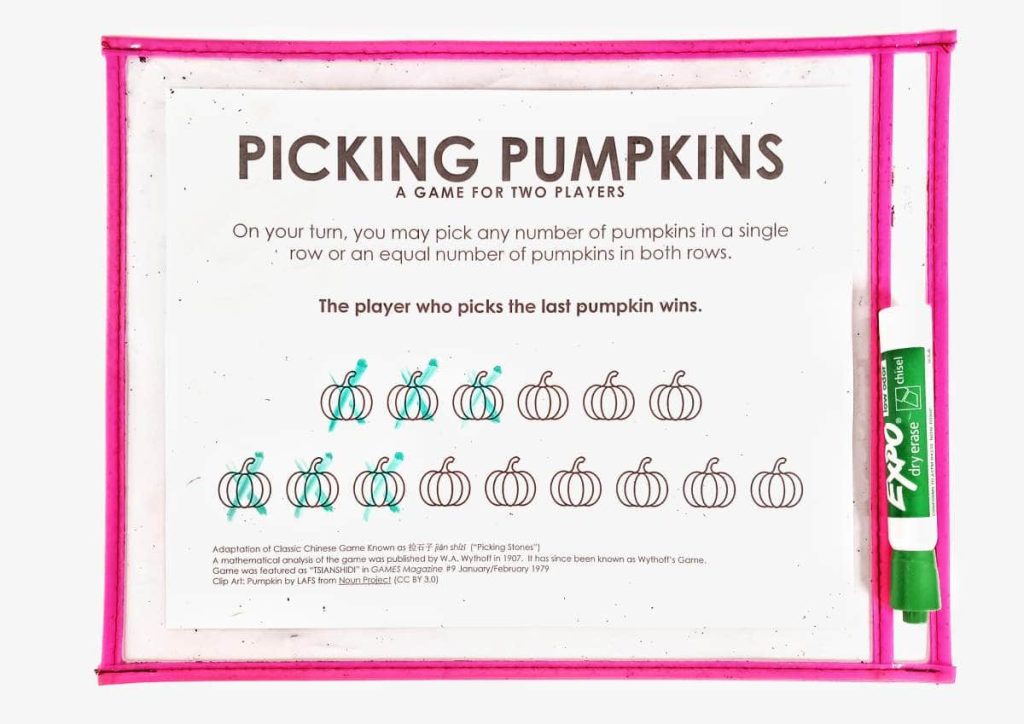
History of this Game
Picking Pumpkins is most definitely not a new game. It is a holiday-themed recreation of a very old game.
Martin Gardner claims that this game is an adaptation of a classic Chinese game known as 捡石子 jiǎn-shízi or “Picking Stones.” The original game involved piles of stones. I switched the stones for pumpkins to give the game a fun, fall vibe.
In 1907, a mathematical analysis of this game was published by W.A. Wythoff. As a result, it is often referred to by mathematicians as “Wythoff’s Game.” You can find quite a few resources to understand the mathematics of this game by searching for “Wythoff’s Game.”
I discovered this game under the name “TSIANSHIDI” in GAMES Magazine #9 (January/February 1979) in an article titled “Games Mathematicians Play.”
Ideas for Using in Class
This game is quick to teach and quite quick to play. Students should have time to play several games in quick succession and hopefully start to notice some patterns or form some hypotheses.
The relatively quick game play leaves plenty of time to look at the game through a critical lens.
- Is there an advantage to going first or second?
- Can you craft a winning strategy?
- Is it possible to play in such a way that you win EVERY TIME?
I think this would make a great class opener activity or brain break during the fall or Halloween season.
I have a class period later this week where my students are a day ahead of my other class due to a pep assembly before Fall Break. I plan to have them complete a few Halloween-themed activities including this game and the Halloween Triples puzzle I shared yesterday.
Want to combine this short activity with a few more activities to fill out an entire class period? Both the 9 Pumpkins Puzzle and the Ghost Game would make go great with this activity!
Free Download of Picking Pumpkins Game
The gameboard for this picking pumpkins game is available to download for free as a PDF file and an editable Publisher file. For the editable file, you will need to have Microsoft Publisher installed on your computer to open and edit the file.
Click here to Download
Picking Pumpkins Game (PDF)
4594 downloads – 117.89 KB
Click here to Download
Picking Pumpkins Game (Editable Publisher File ZIP)
2159 downloads – 154.19 KB




